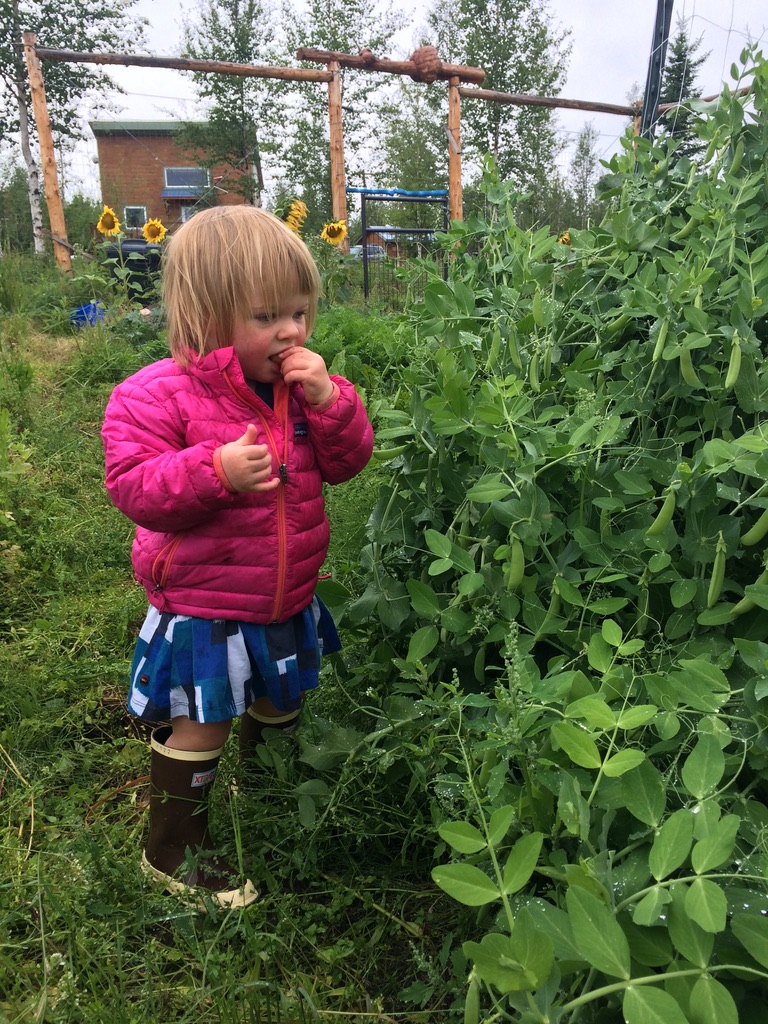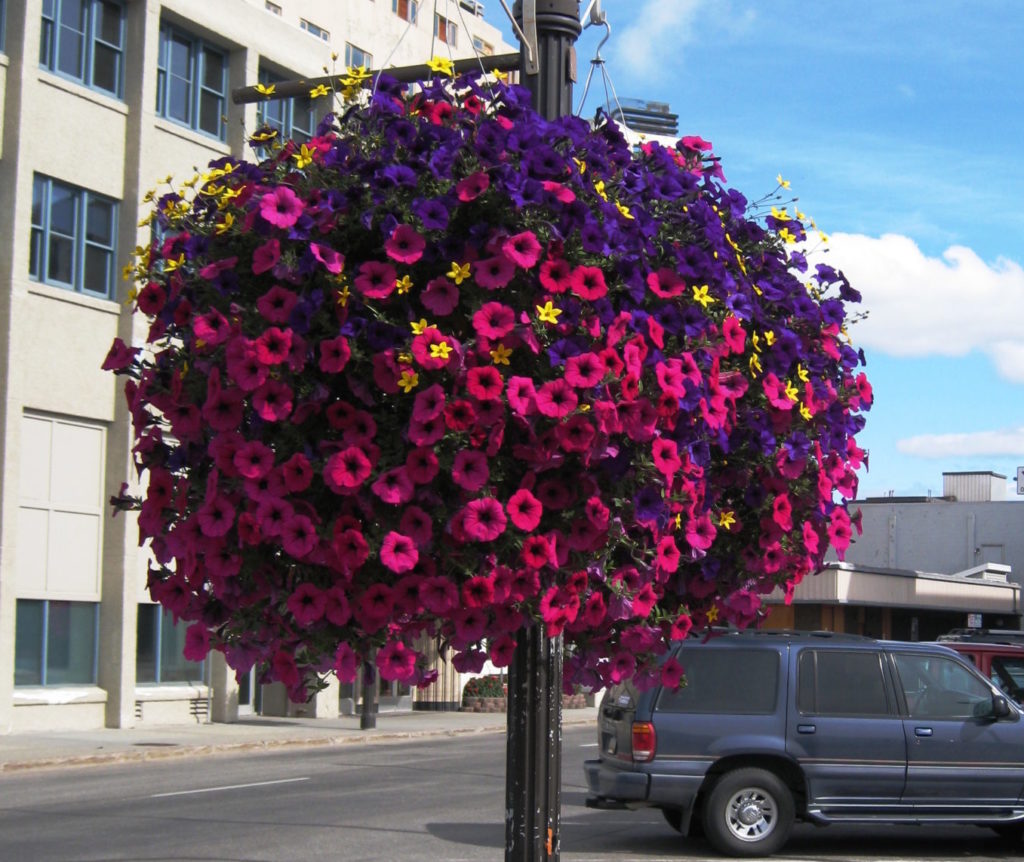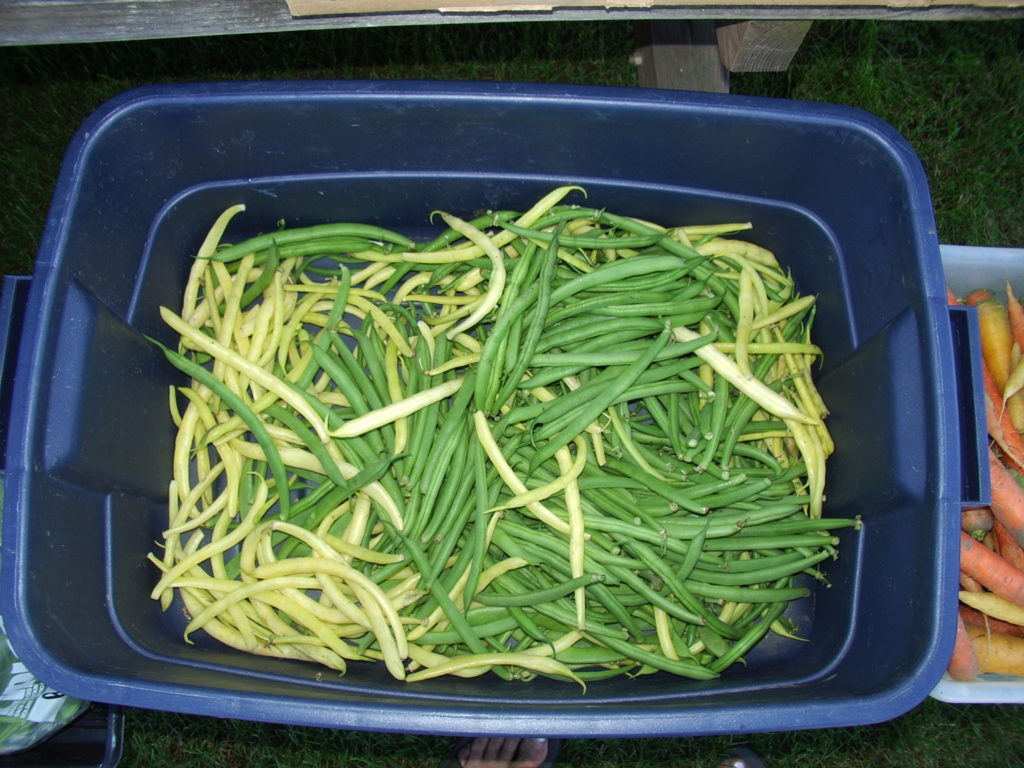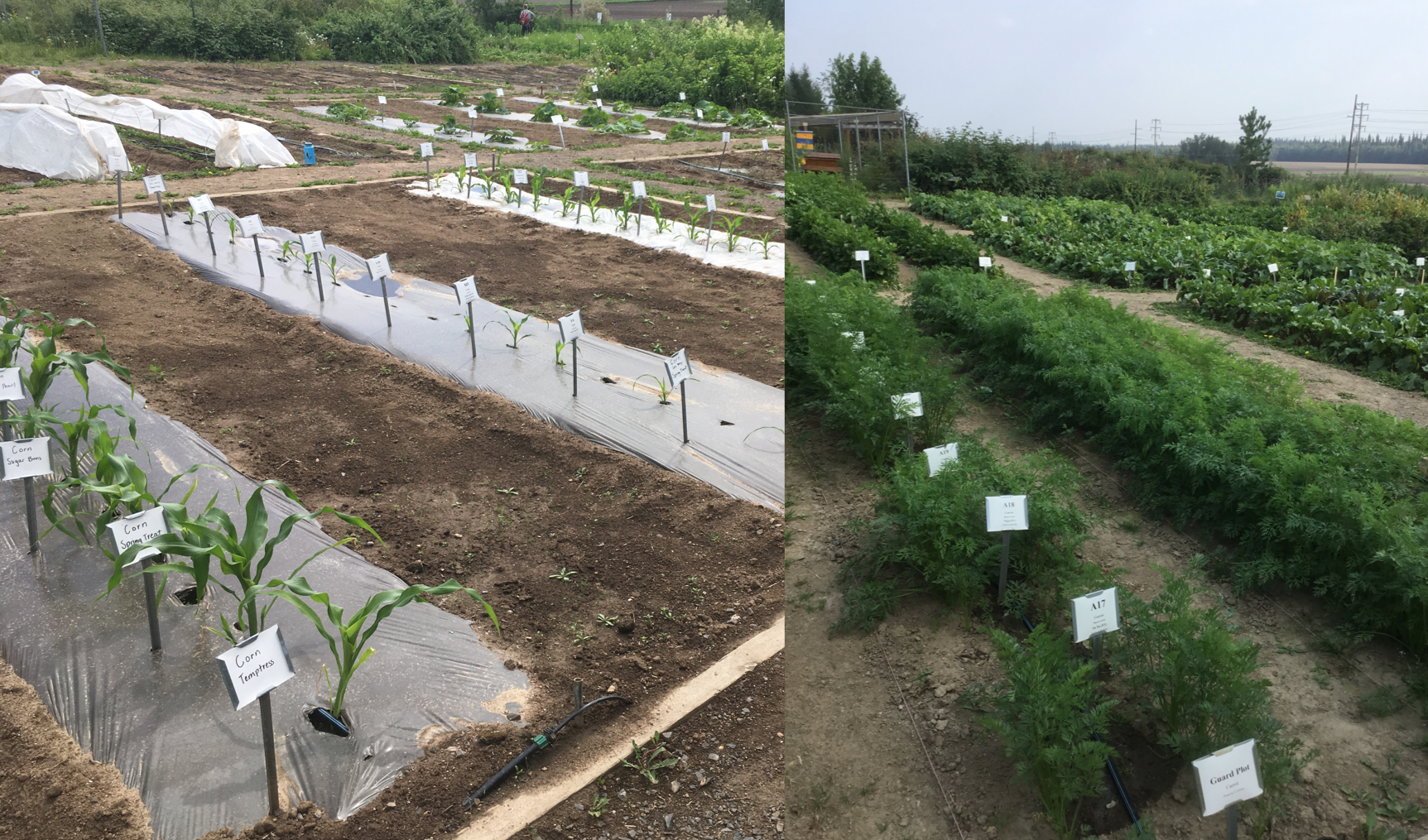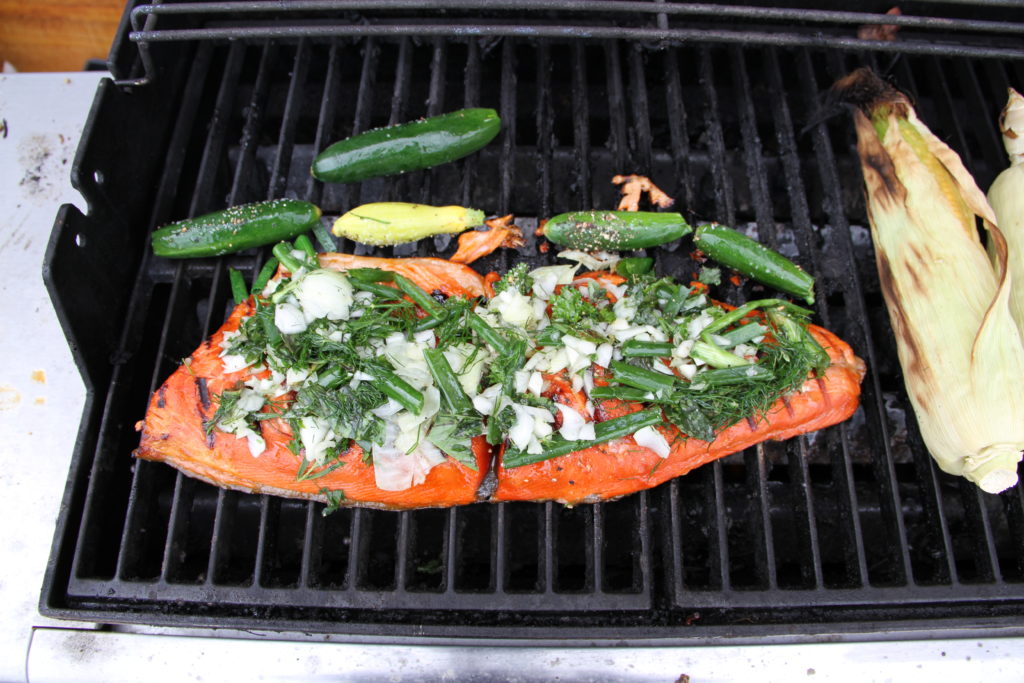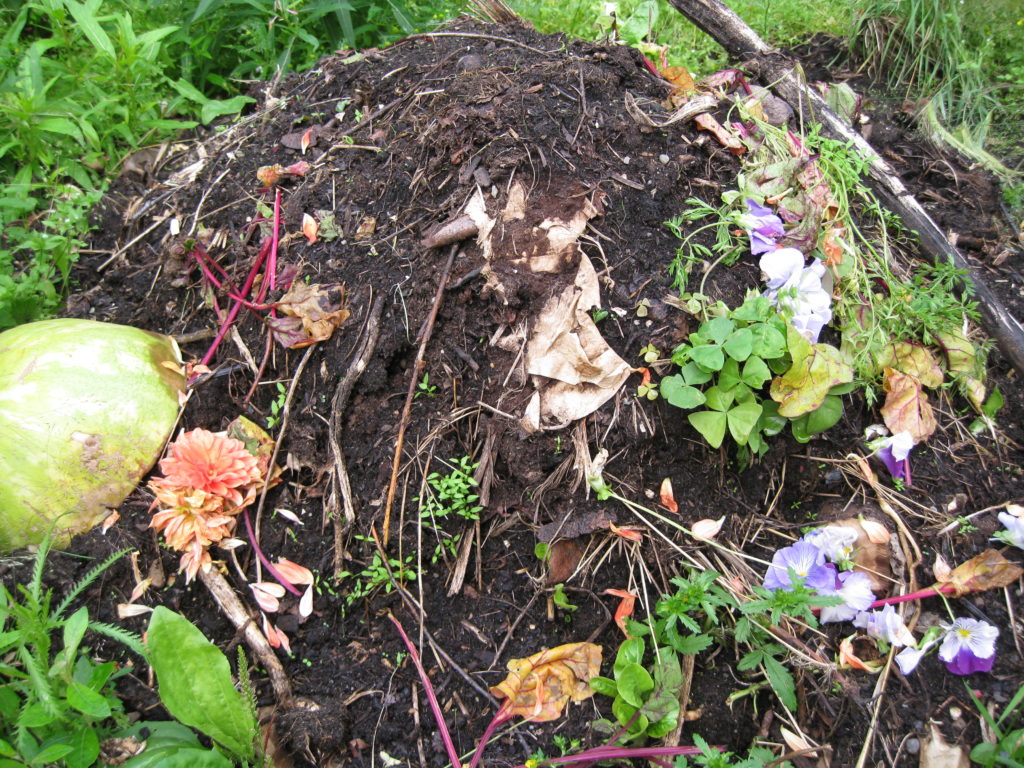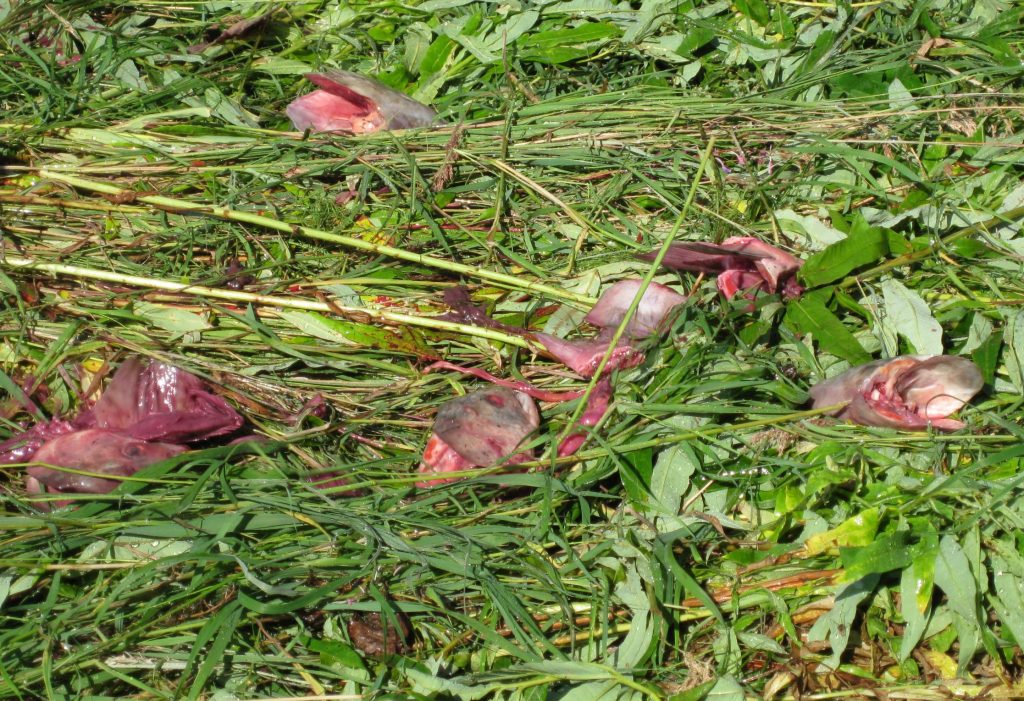As some of you might have deduced from reading this blog, I’m a die-hard edible gardener and it’s a stretch for me to think outside the vegetable row. If you can’t eat it and it doesn’t attract pollinators or fix nitrogen, it’s usually not going to get a spot in my garden. This summer, I decided to change that and dedicate one bed to flowers. Here’s how I designed it.
First, I needed to determine what I liked and didn’t like. As a starting point, I glanced through books and magazines, online, and through my many photos of flower beds taken at the Georgeson Botanical Garden on the Troth Yeddha’ campus, and at local hotels, greenhouses and home landscapes. I’m a garden nerd, and so I take a lot of photos of flowers, vegetables and gardens.
One of my favorite beds on campus uses the massing approach, where only one type of flower or plant in one or two shades is grown. This bed is a mass of crimson and strawberry-colored Nicotiana. It creates a dramatic visual impact. I’m not so into the beds on campus that are white and baby pink alyssum, a so-called restful combination.
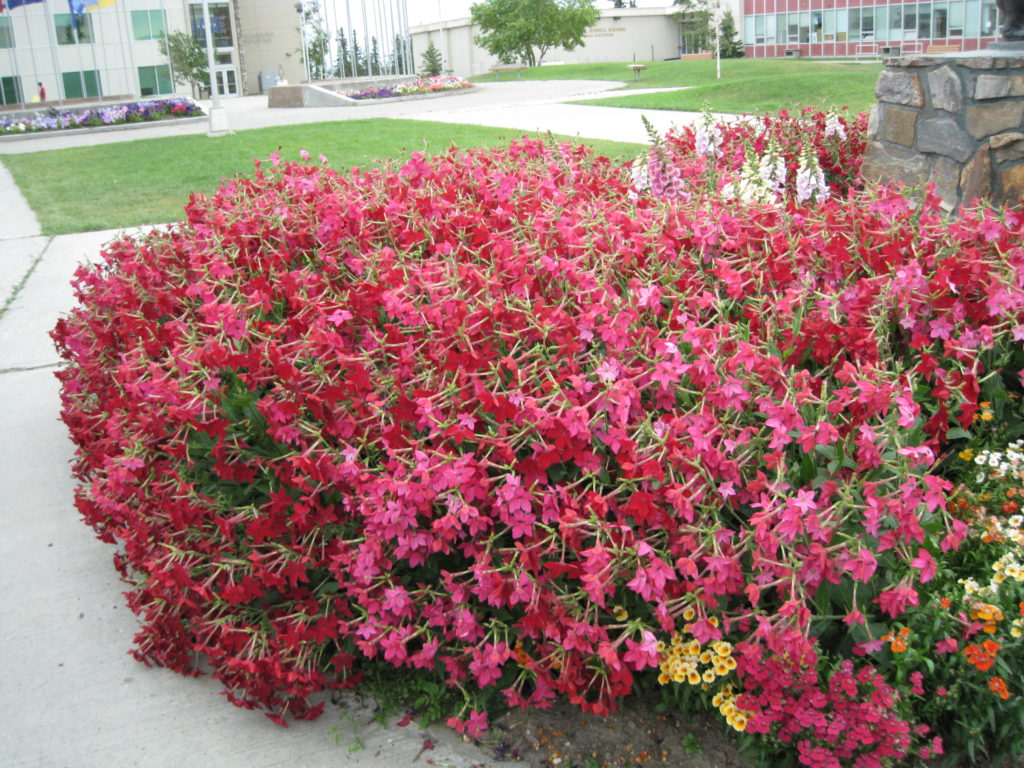
These Nicotiana have taken over this garden bed and are a good example of a massing technique.
In addition to the overall bed design, I needed to think about color, texture, flower shape, height, focal points, bloom sequence and whether to integrate flowers, shrubs, herbs, vegetables and grasses. And finally, would the plants I chose thrive in Fairbanks?
From looking at other flower beds, I figured out that for colors, I like the maximum amount of contrast. Give me a bright pink cosmos with dark blue iris (or blue sage) or bright orange marigolds with dark blue lobelia. In There’s a Moose in My Garden, Brenda Adams calls this a “sassy’ combination. On the color wheel, this translates to a complementary or split complementary color scheme. I’m not so drawn to monochromatic, washed-out colors. This handy color wheel calculator helped further identify color schemes I liked. Cornell University also has some helpful guides for using color to design flower beds and more.
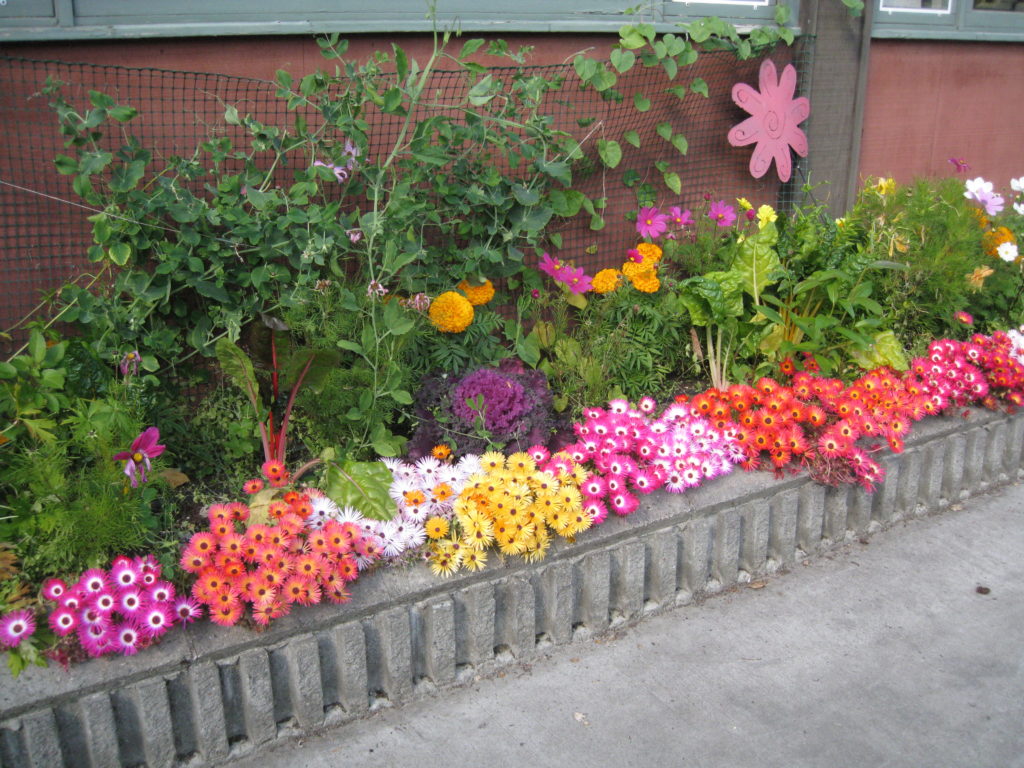
A very colorful garden bed that integrates flowers and vegetables is a beautiful and practical way to grow food and ornamentals in limited space. In front are Livingston daisies, Harlequin mix.
I also like varied and dramatic textures like grass or globe onions or coleus combined with flowers. And I like unique, oddly shaped flowers like hibiscus, Chinese asters, double poppies and clematis, not only because they photograph well. I’ll blame it on being a lifetime Fairbanksan, but I’m a little bored with petunias, lobelia, geraniums, begonias and pansies, even though I know they’re dependable.
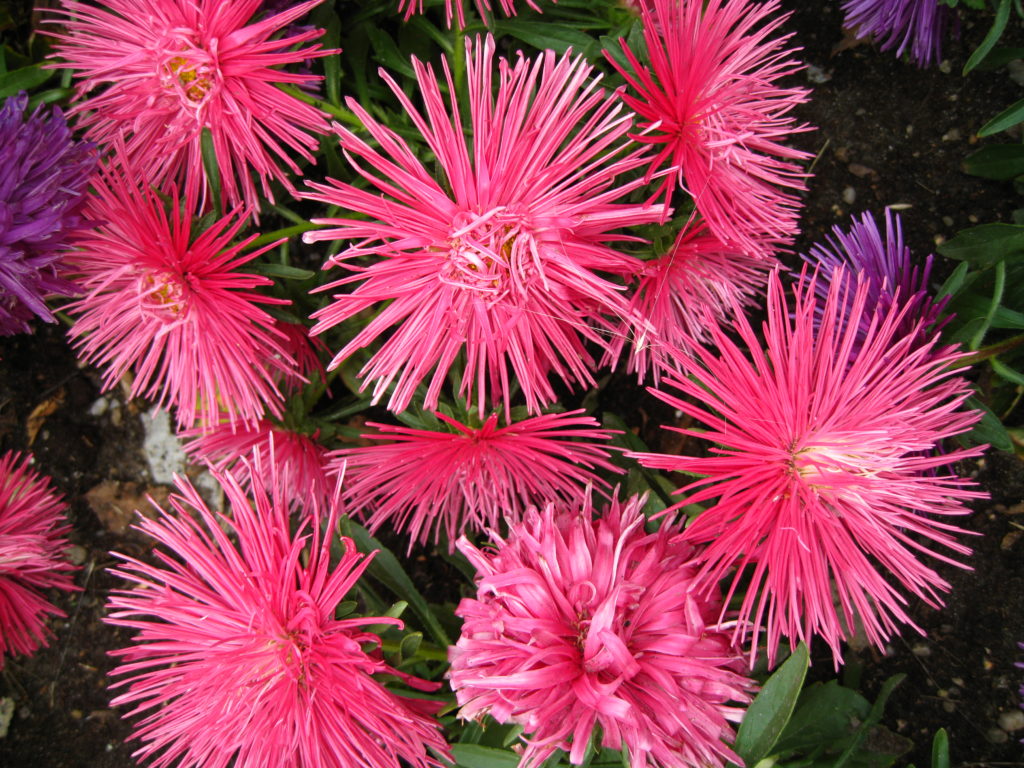
These Chinese asters offer an interesting texture and vibrant color.
Continue reading


